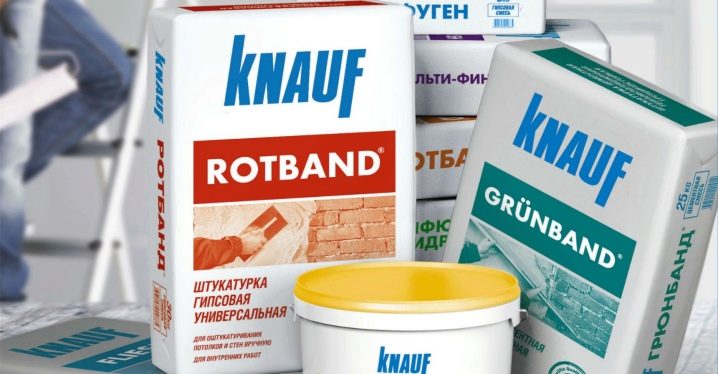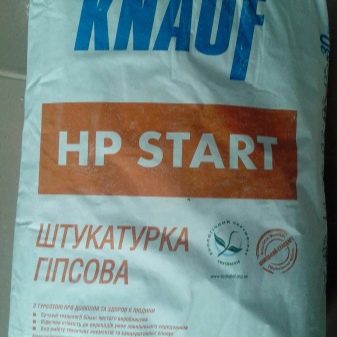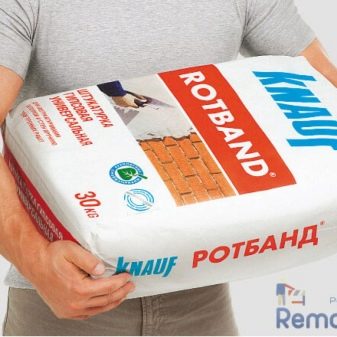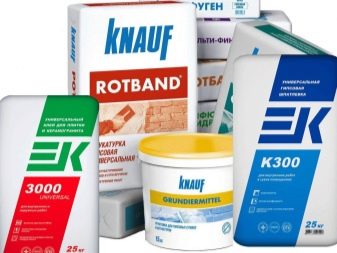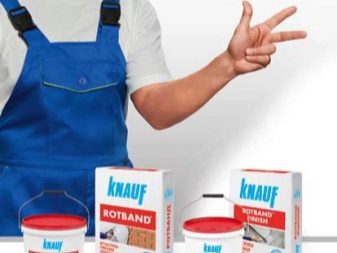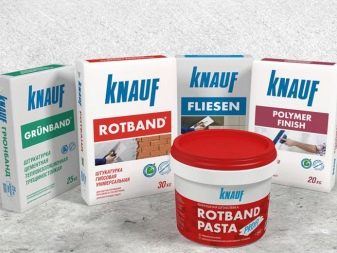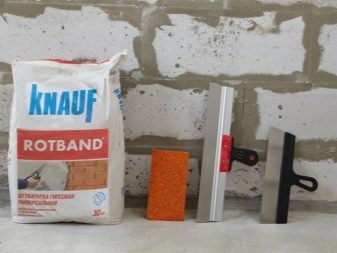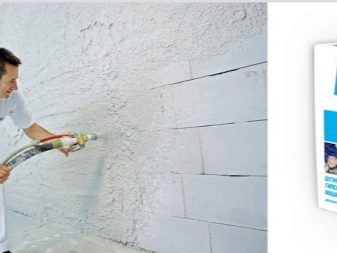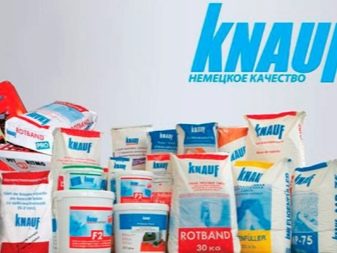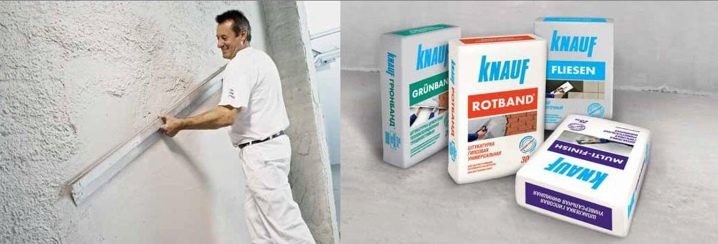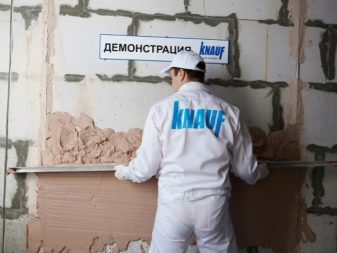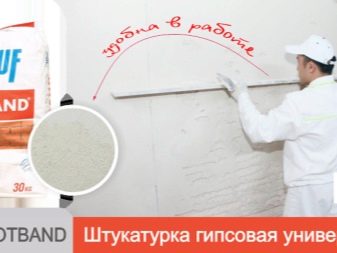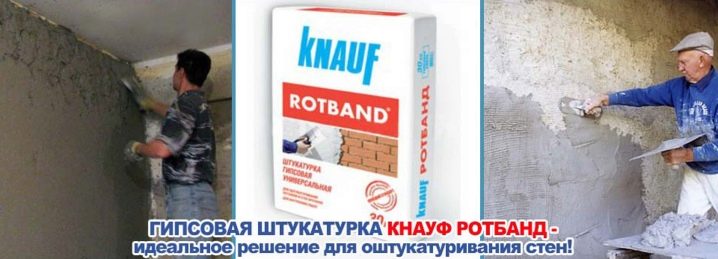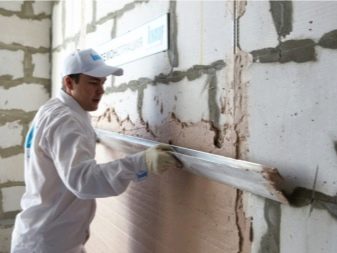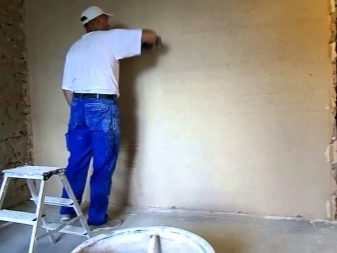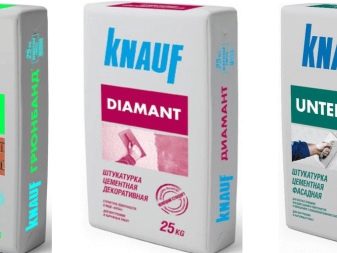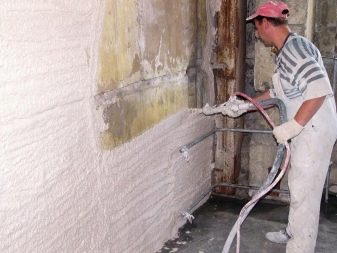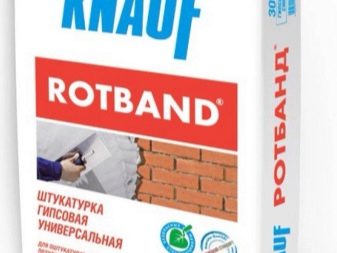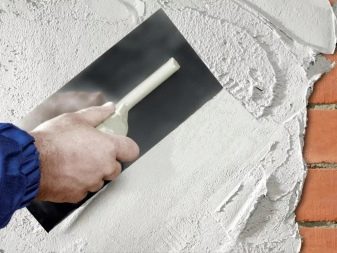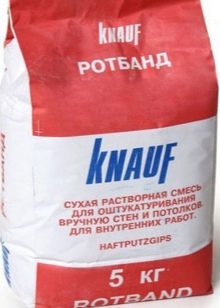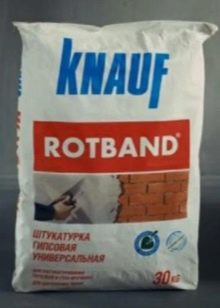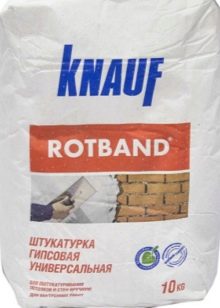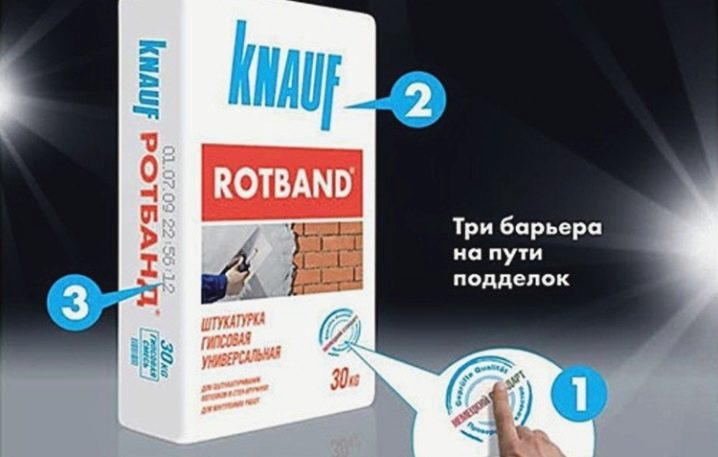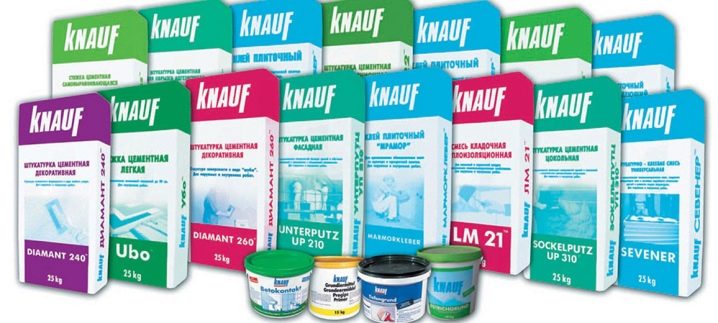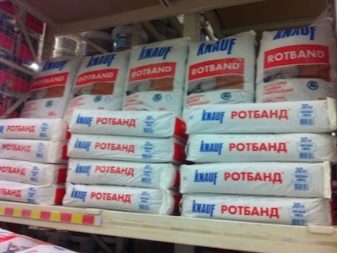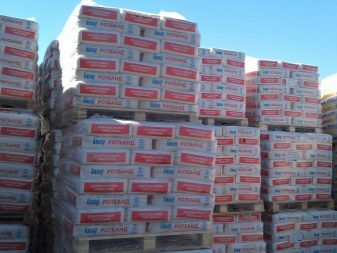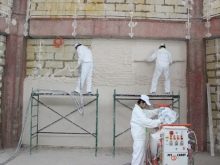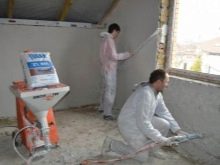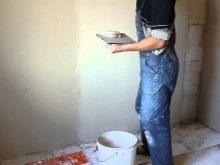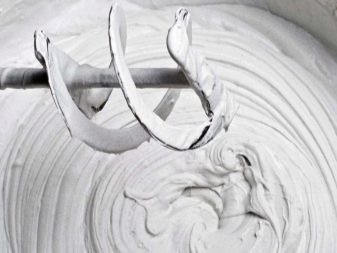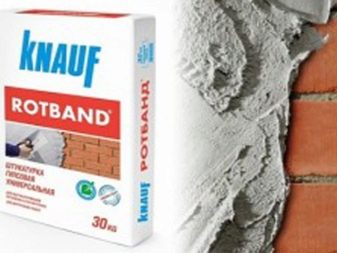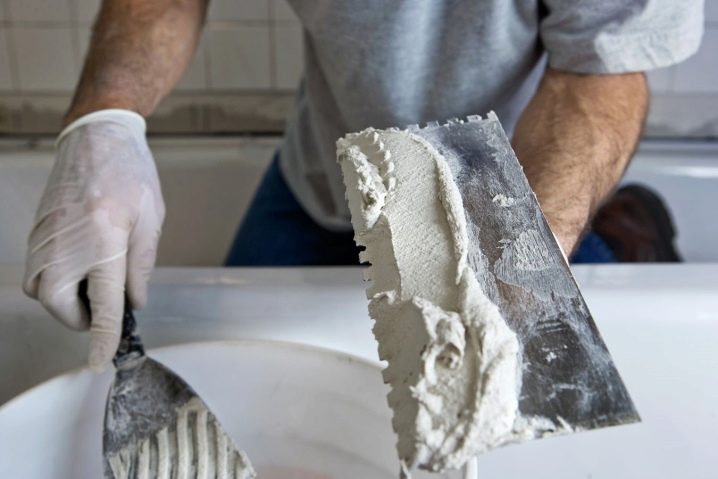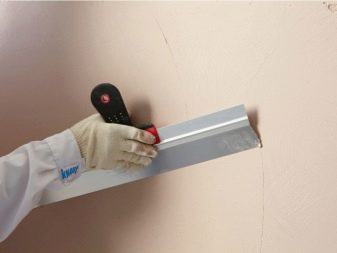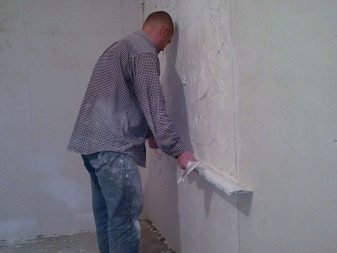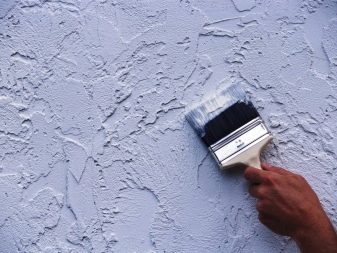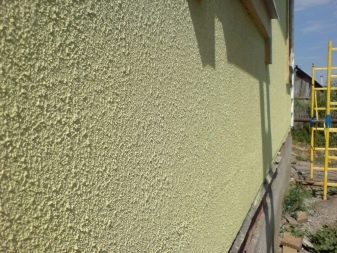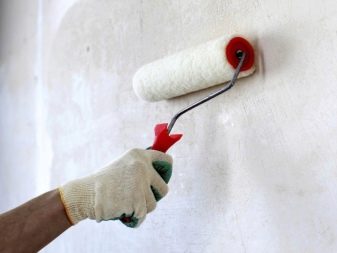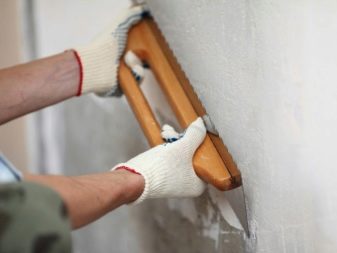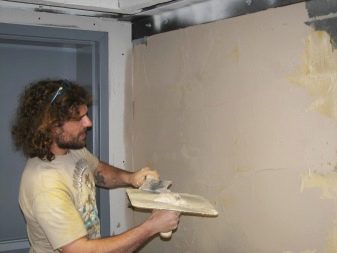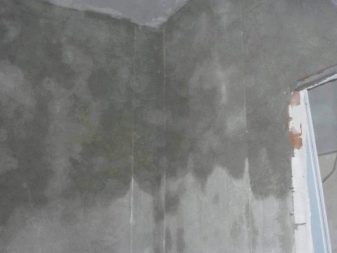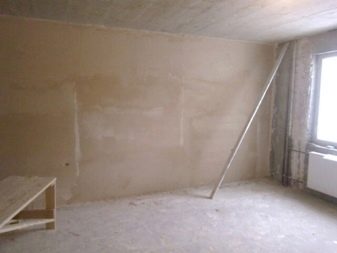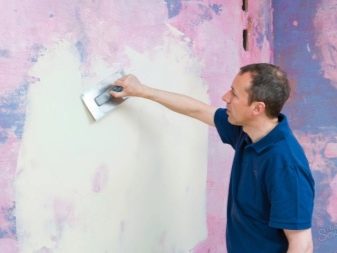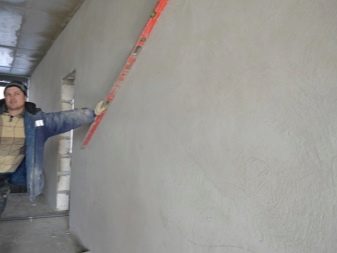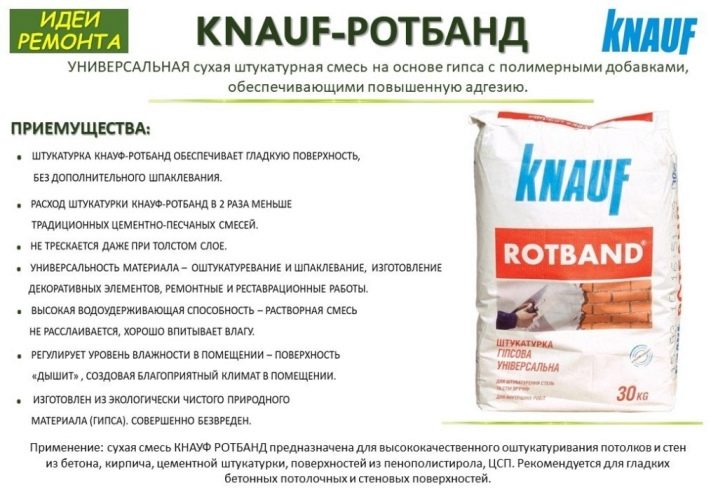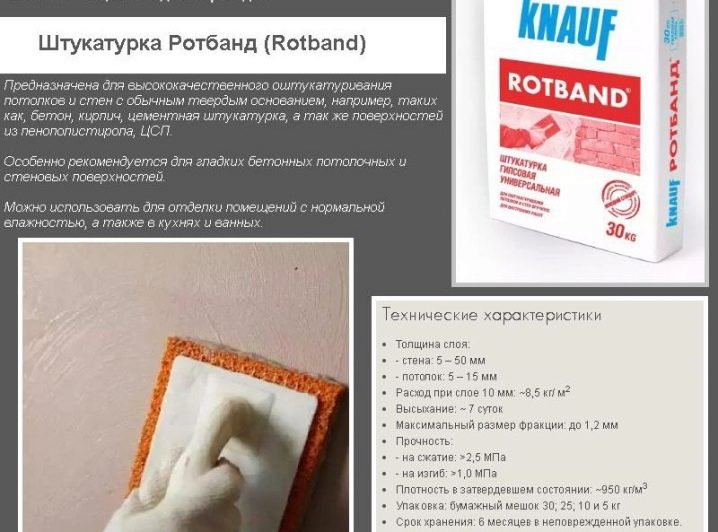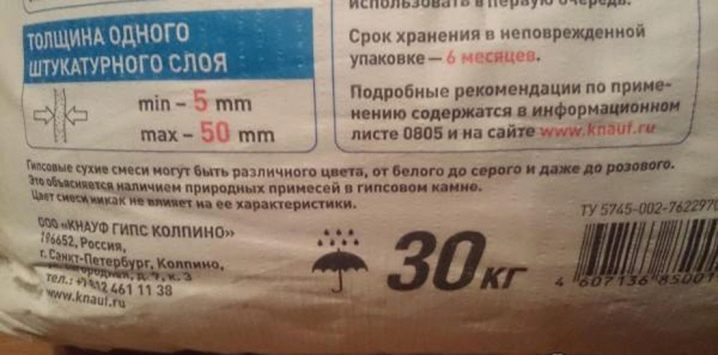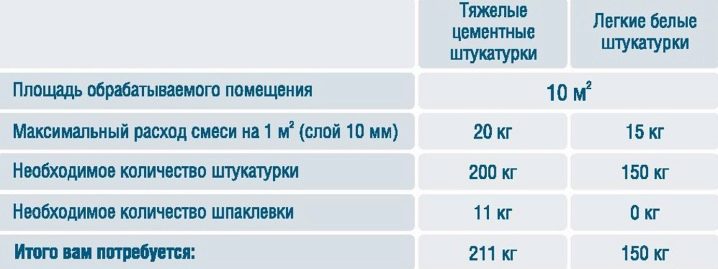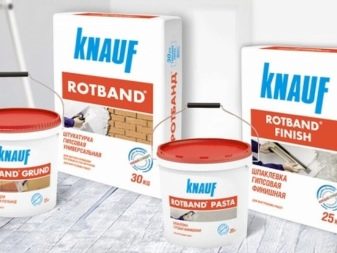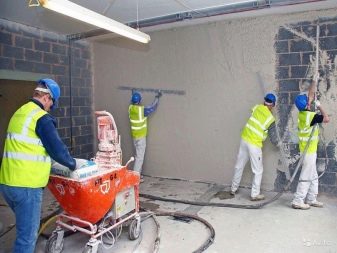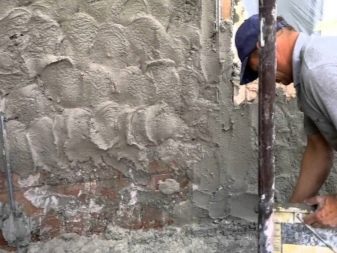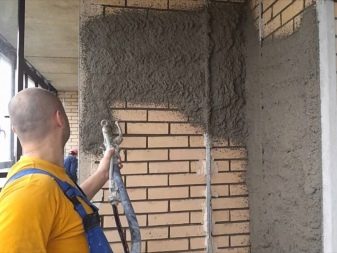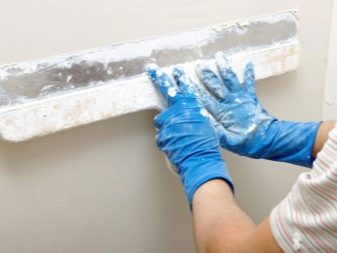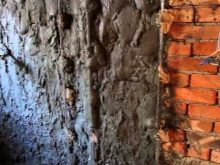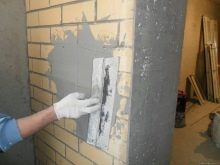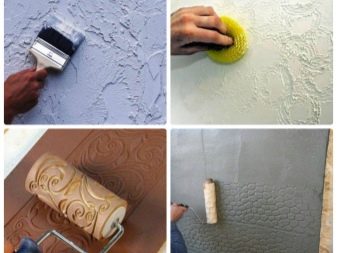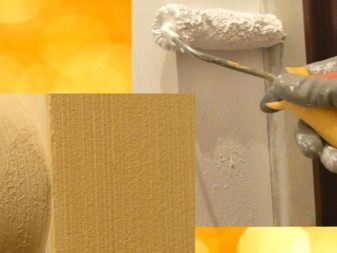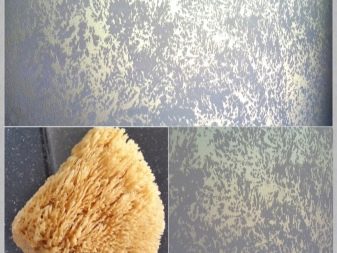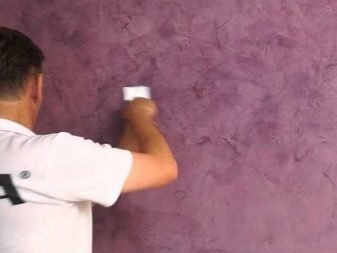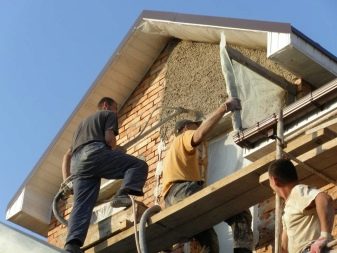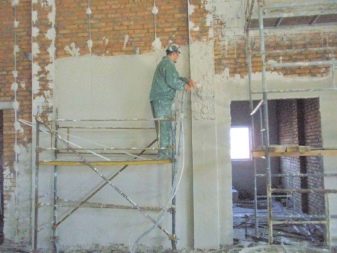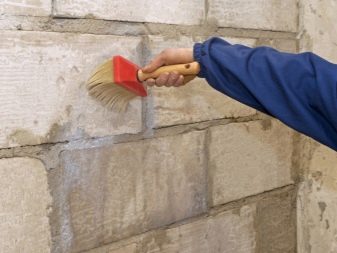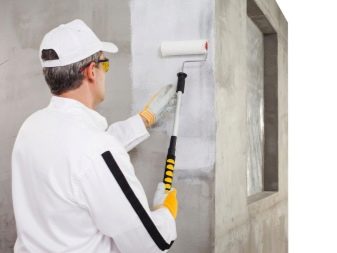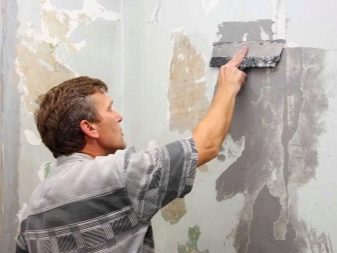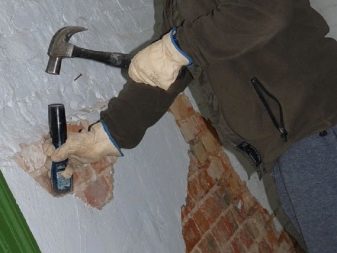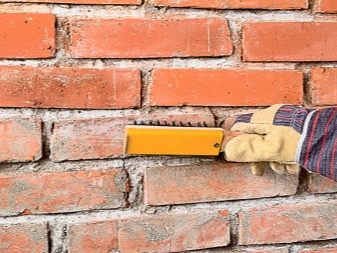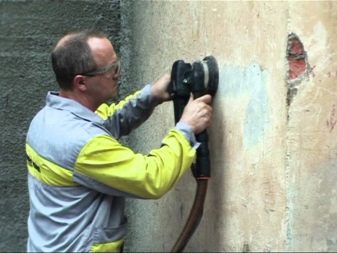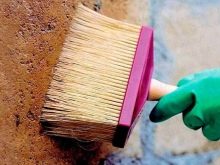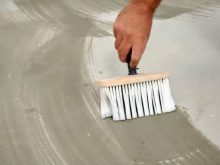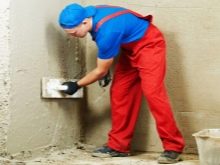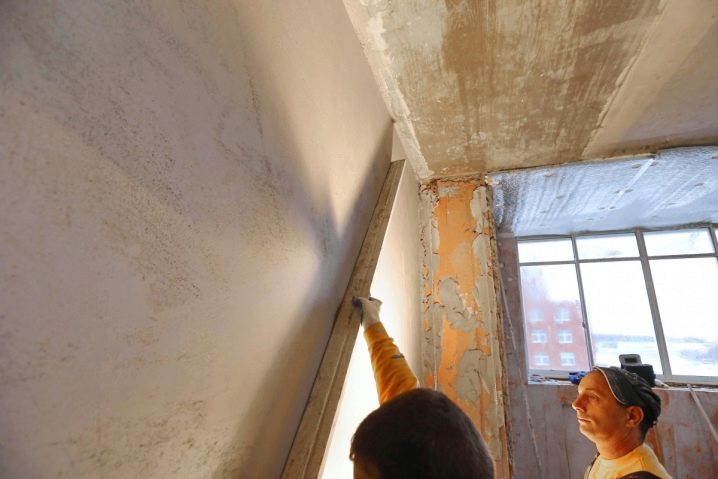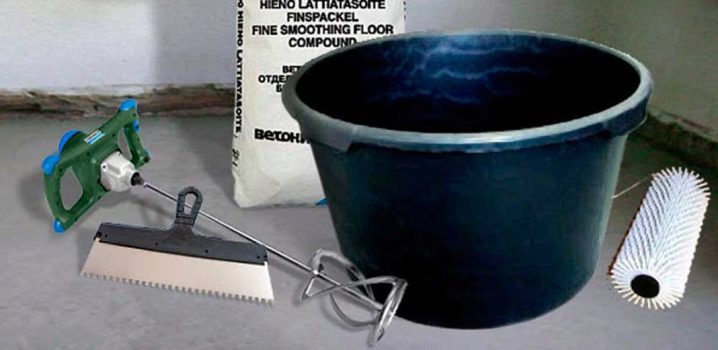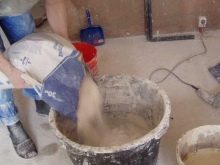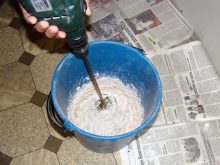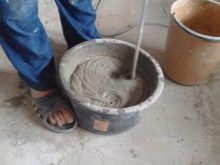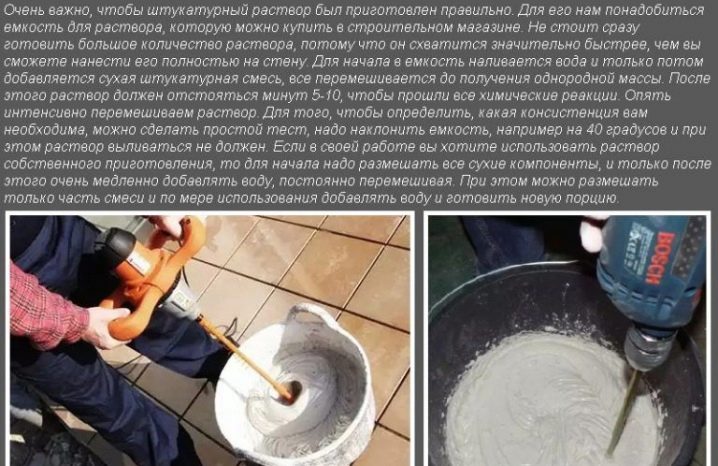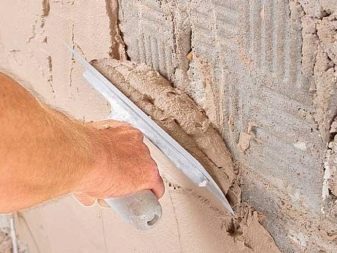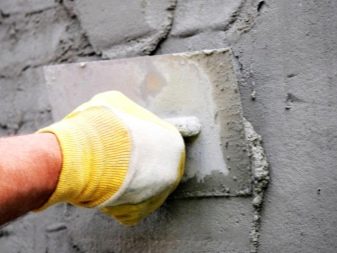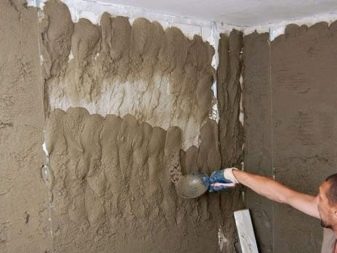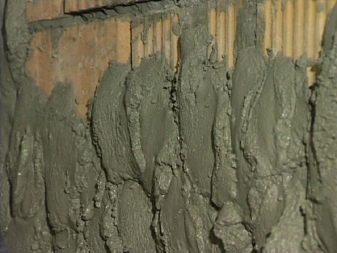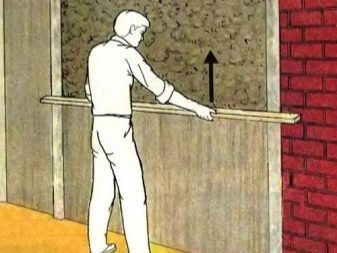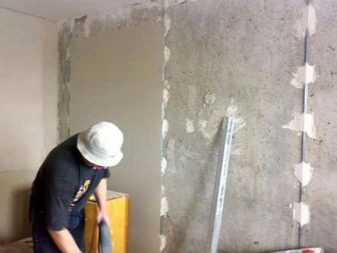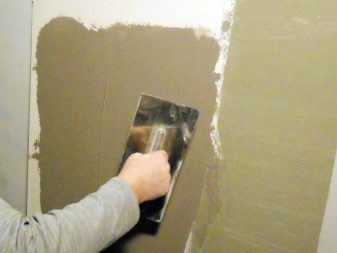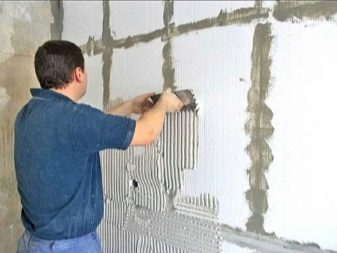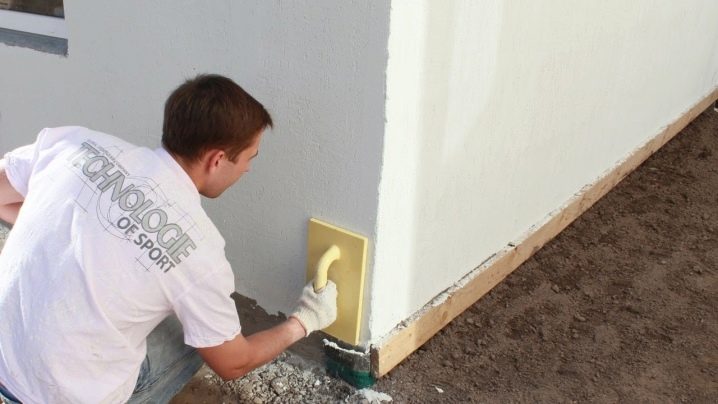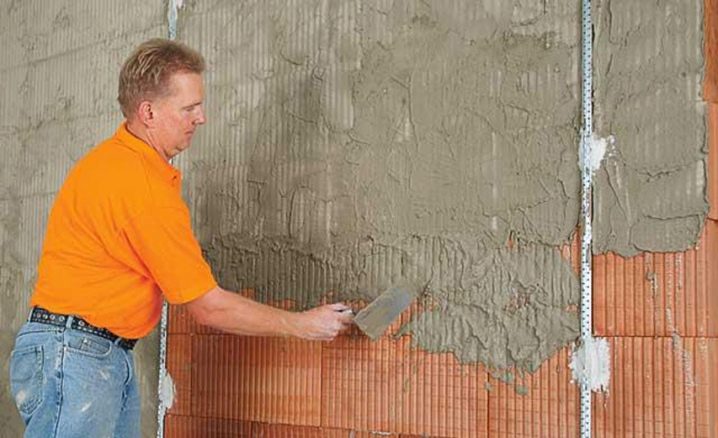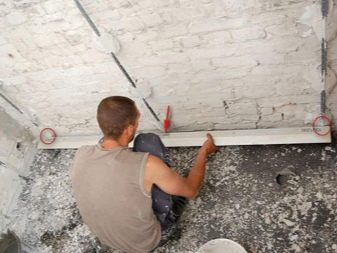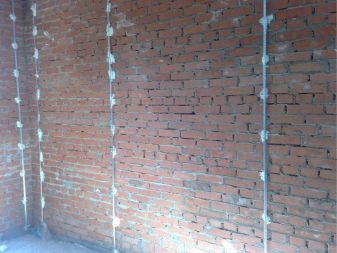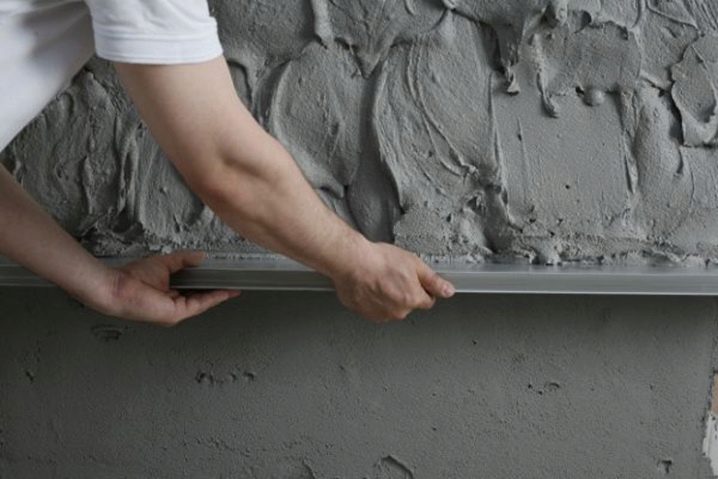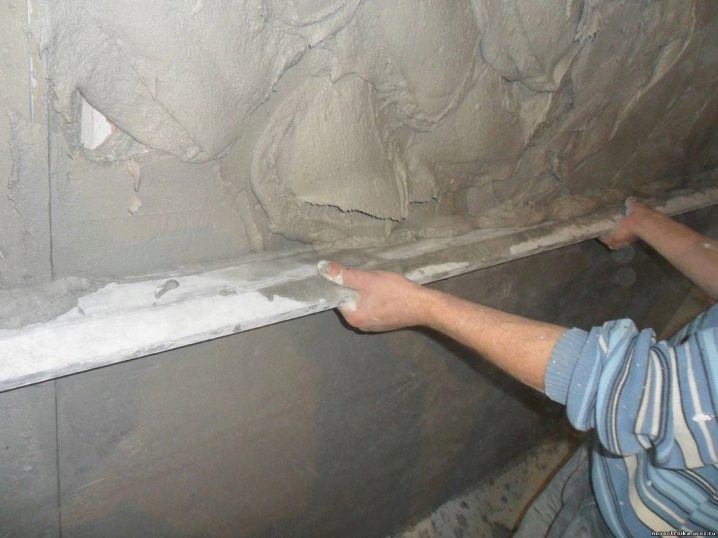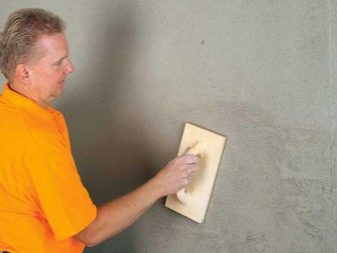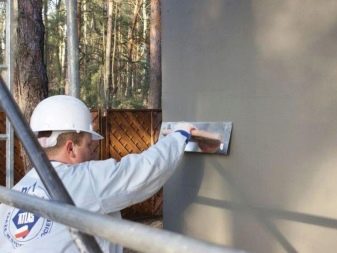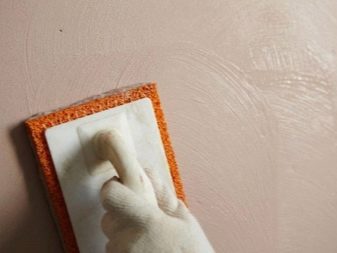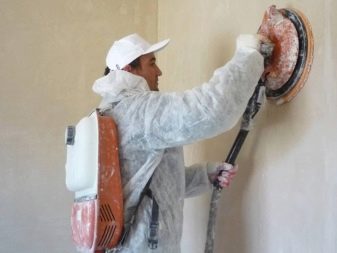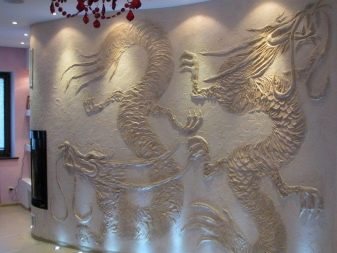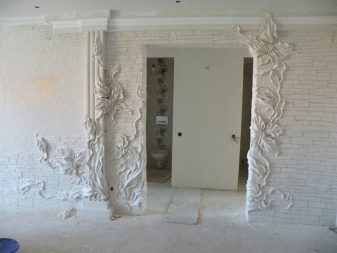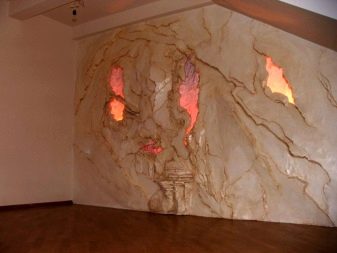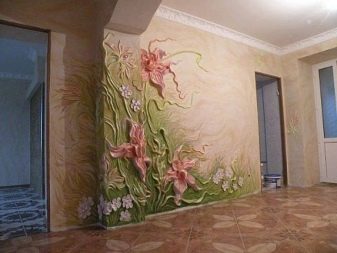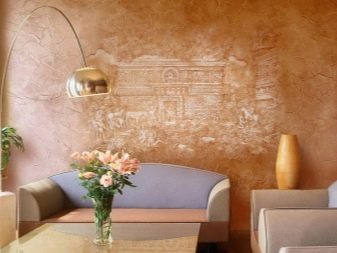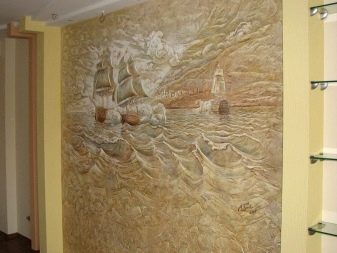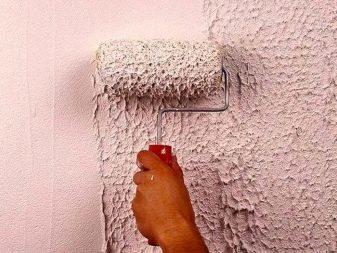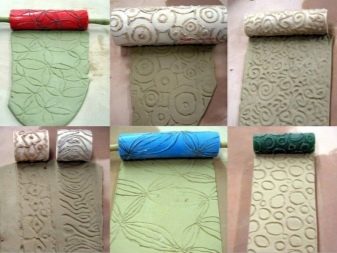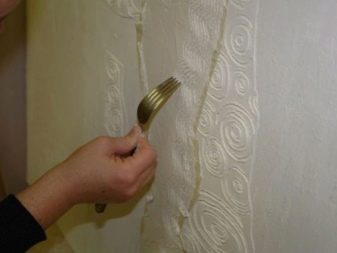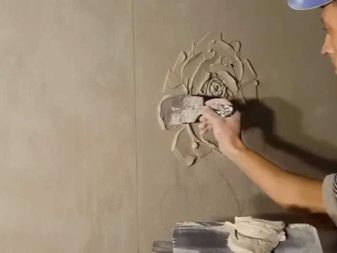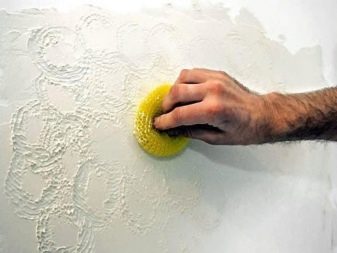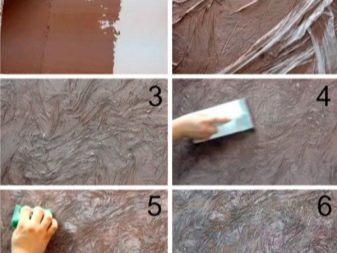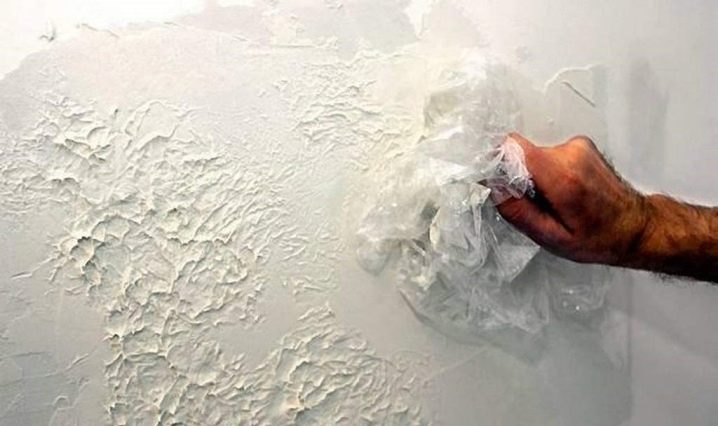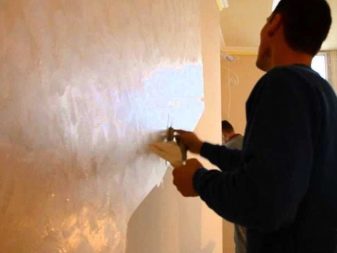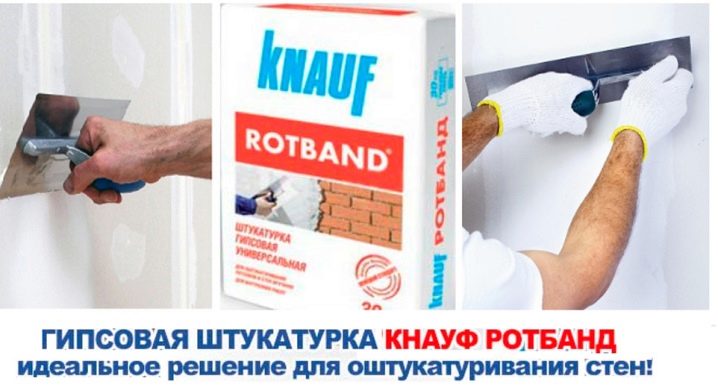Knauf Rotband plaster: characteristics and application
Knauf Rotband plaster is a leader in many building materials ratings. The secret of the manufacturer is simple: high-quality products, excellent technical characteristics, simple and clear application even for beginners.
Special features
Knauf plaster is acquired and praised for many reasons. One can not even mention the identity of the concepts “Knauf products” and “famous German quality”. This thesis has long been proven in practice. But it is worth saying that the founders of the company, the Knauf brothers, are mining engineers by profession.
Choosing gypsum as the basis for the building materials they produce, they were based on their professional knowledge. Gypsum allows you to make construction of a higher quality, faster and more economical, therefore, it is a major component in Knauf mortars.
All products of the manufacturer are well thought out, harmonious in composition, efficient and affordable building materials. They are made taking into account the accumulated experience and the application of innovative technologies, undergo quality control, are distinguished by reliability and energy efficiency. Bonus for aesthetes - laconic and beautiful design of packaging.
Rothband brand products (“Rotband”) stand out in a separate line. This is a multifunctional mixture of dry components on a plaster basis, which is complemented by three more products from the line: putty for applying the thinnest layer and materials for decorative finishing “Rothband Finish” and “Rothband Profi”. The latter is produced in the form of a finished paste.
Features of the Rothband plaster:
- Multitasking. In fact, it is a universal means for preparing a rough surface for decorative finishing and decoration itself. It can seal cracks, irregularities and chips, level the surface of the walls, create decorative elements. It even increases adhesion between the working surface of the walls or ceiling and the finishing material. Therefore, if a newcomer, who first took up the repairs with his own hands, suddenly forgot to put a primer on the wall, “Rotband” will replace it.
- Excellent quality.
- Suitable for professional use and for private use;
- Compatibility with finishing materials from other manufacturers and within the same-named line.
- The ability to use plaster on different types of surfaces: wood, concrete, brick, old walls, "secondary" (re-finishing), drywall, concrete, cement, block materials, cement plaster, polystyrene, OSB and TsSP.
- Materials adapted to the climatic conditions of our country;
- It can be used for rooms with a dry microclimate, in conditions of moderate humidity and in rooms with high humidity with additional protection.
Experienced professionals know that high-quality plaster is the key to successful decoration and repair in the room.
The list of advantages of the Rothband blend is pretty convincing:
- When using it, you do not need an additional layer of putty. This saves time and money and simplifies repairs.
- A layer of plaster can be applied to any desired thickness. It does not crack from uneven drying or its own weight.
- Due to the fact that the mixture at the base is universal gypsum for finishing work, the consumption of materials is reduced.Compared with cement-sand mixtures, it is almost two times less.
- In one approach, it is possible to apply up to 50 millimeters of the mixture!
- Thickening of the layer of plaster increases the insulation and sound insulation in the room.
- The universality of the material in all respects: in terms of compatibility with different surfaces and functional use. Knauf "Rotband" plaster is suitable for roughing, decorative and restoration work.
- The rate of hardening of gypsum is much higher than cement mixtures, so you can start the finishing work earlier.
- A mixture of plastic, it is convenient to use in hard to reach and relief places.
- Knauf "Rotband" gives a fire resistant coating.
- Due to the unique components of the composition of the plaster mixture is able to retain moisture in itself even when used on absorbent and porous surfaces. This allows it to remain whole, without cracks and irregularities during and after drying.
- The surface of the walls is “breathable”, no condensation and the greenhouse effect.
- Gypsum is a pure natural mineral that does not carry any threats to the human body. It does not cause allergies and does not contain toxins.In addition to the finely dispersed gypsum powder, it contains components that increase adhesion and prevent shrinkage, plasticizers necessary for the fluidity of the mass and its hardness after solidification, crystalline silicon oxide. Normal water is used for dilution.
- The color of the plaster is basic, suitable for any kind of decorative work, and the texture has good adhesion. This allows the use of a minimum amount of primer composition before applying a decorative coating.
The mixture has some drawbacks noted by the experts:
- when filling deep cracks, the material may shrink slightly;
- the second layer of plaster is poorly applied over the first, the use of priming compositions is required;
- the consumption of material in practice is slightly higher than that indicated by the manufacturer on the package;
- the mixture quickly hardens on the air, so the finish must be done quickly;
- the price for 10 kg of the mixture is two times higher than the price for the products of the domestic producer, and one and a half for the products of other foreign manufacturers.
Specifications
Technical characteristics of Knauf "Rotband" plaster is a combination of material properties, features of its application on different surfaces and operational properties. They include a number of indicators, such as composition, color, thickness, shelf life, drying time and others.
Release form
Dry plaster mixture is available in a standard format of bags from 5 to 30 kilograms. Five-kilogram bags come in plastic and paper. Weight 10, 25 and 30 kg is available only in paper bags. Finishing finish in finished form (paste) is produced in plastic containers with a volume of 5-25 liters.
The Knauf "Rotband" line has several anti-counterfeit security features that make it easy to distinguish high-quality products from underground material from unknown raw materials.
These include:
- stylized round stamp "German standard. Proven quality ";
- marking the time and date of production with an accuracy of seconds;
- embossed in the form of stripes on the top layer of the packaging of special paper.
In cases of doubt about the authenticity of the material, you should apply for a quality certificate or directly to the company's employees who will identify non-advertised methods of protection against counterfeiting.
Terms and conditions of storage
The mixture is suitable for use for six months, if stored in a dry ventilated room at a temperature of 5-25 degrees, away from sources of heat, humidity and direct sunlight.
Composition
The composition of the substance is universal and not disclosed by the manufacturer in order to avoid fakes. It is known that this is a finely dispersed gypsum mixture with the addition of components of mineral origin, which increase elasticity, strength, ability to retain moisture and adhesion of the substance and minimize its shrinkage and cracking.
Classical plaster is white both in a dry form and after drying on the surface of walls or ceiling, but sometimes there is a coloring pigment in the composition.
Colour
The color of the plaster is chosen according to the type and shade of the material for the decorative finish. It is insignificant, but still affects the performance of the material and its "behavior" during the finishing work.
There are a total of three tinting options available: white (can also be called colorless due to the lack of coloring pigment), gray and pink. According to the manufacturer, the color is not chosen specifically, but depends on some impurities in the mineral rock. It does not affect the quality of the coating.
White plaster is considered a "classic of the genre."
It is produced both at factories in Germany and in branches of the Krasnodar Territory and Astrakhan Region The gray mix is made in Krasnogorsk. Pink is produced in the city of Kolpino, Chelyabinsk region. This division by region is explained by the location of the quarries where raw materials are produced for the manufacture of mixtures.
Fraction size
This parameter is also subject to standardization. The manufacturer does not set the minimum indicator, but the maximum is 1.2 mm.
Fine-grained plaster can give the effect of "fluidity" on a vertical surface. As a result, leaks are formed on the wall that must be removed. It is recommended to use it for dense finishing materials, for example, some wallpaper.
With a coarse-grained mixture, such problems do not arise. It is suitable for self-decoration.
Thickness
The minimum and maximum values of the layer thickness for different surfaces vary within different limits. For walls, the manufacturer recommends starting one layer from 5 millimeters and not exceeding 50, for the ceiling the lower figure is the same - 5 mm, but the upper one is several times less - only 15 mm.
Surfaces that need to be treated with a layer of more than 50 mm in thickness are plastered in stages. First, a primer is applied (preferably the same manufacturer), then a layer of “Rotband” putty, and after it is dried, the surface is re-primed. When the primer is dry, you can apply a second layer of plaster up to 15-50 mm thick.
Drying time
The time frame for each state and process is different:
- "Maturation" of the solution after adding liquid to the mixture lasts 10 minutes;
- the solution retains the consistency of the liquid mass in an open container for half an hour;
- drying a layer of minimum thickness is several hours, depending on the microclimate in the room;
- drying the full layer is 7 days. Some sources mention shorter periods (24 hours, 3 days), but the manufacturer’s official recommendations are to start finishing no earlier than a week later.
The dry mixture has a density of 730 kilograms per cubic meter, the frozen plaster is somewhat larger - 950 kg / m3
Strength
It is denoted as “compressive strength” and “flexural strength”, which implies the resistance of the plaster layer to pressure so that the integrity is not damaged.
The maximum allowable pressure on the layer of “Rotband” plaster in compression is 2.5 MPa, at the fold - above 1 MPa. It is difficult to measure such indicators by yourself, so it is important to simply check the information on the package. The figures for these items should not be below 2.5 and 1.
Adhesion
Knauf Rotband universal stucco adheres best to even concrete and cement surfaces, but also handles porous and uneven walls and ceilings.
Resilience
Implied resistance to temperature extremes, low temperatures, humidity, fire resistance. The manufacturer does not indicate in the information on the packaging of such data, but empirically it turned out that the material can be used in rooms with a wet microclimate (bathrooms, kitchens), it has vapor permeability, moisture resistance, fire resistance.
Consumption
A rare manufacturer of building materials is not being clever, pointing to the packaging approximate figures of the substance consumption per square meter of the surface being treated. Even Knauf, with its impeccable reputation, does not provide 100% correct information.
When calculating, it is always necessary to take into account that in practice it may take a little more mixture to process problem areas., a layer will be thicker than planned, or a part of the plaster will be damaged due to improper storage of the finished mixture.
Determine the consumption per square meter in two ways:
- take the figure specified by the manufacturer on the package (for a “Rotband” it is 8.5 kg per square meter with a layer thickness of 1 cm), multiply by the entire area of the treated surface of the walls or ceiling and round the number of bags to the big side for insurance;
- independently calculate the average layer thickness and amount of material. Independent calculation turns out to be time consuming, but more accurate. A layer of plaster of 1 cm is not always enough. This is due to the fact that the surface of the walls or ceiling is never perfectly flat due to defects in building materials. Height differences are inevitable.
To level them and calculate the correct number of bags (kilograms) of plaster, you need to perform a sequence of actions:
- “Hang” the wall at three points and determine the average layer thickness. For hanging the walls are used so-called vertical beacons. To install them you need nails and cords with a plumb. Beacons are installed every 3 meters.With their help, the deviations in the vertical and horizontal lines are calculated. For example, if a wall with an area of 9 squares of deviation is 3, 4 and 5 cm, their total number is divided by the number of beacons, the result is an arithmetic average equal to the required thickness of the plastering layer. In this case, it would take 4 cm.
- To study the manufacturer's recommendations. Knauf recommends a ratio of 8.5 kg per square.
- Calculate the required amount of plaster. For this, the manufacturer's rate is multiplied by 1 cm by the thickness of the middle layer, and then the resulting figure kg / m2 is multiplied by the entire area of the working surface.
- Since the products are sold in packages from 5 to 30 kg, you need to divide the resulting figure into 5, 10, 25 or 30 in order to calculate the number of bags of such volume needed for the repair of one room.
- Calculate a small stock. The weight of the plaster for the entire surface area is taken as 100%, you need to find how much will be in kilograms 5-15% of this weight. The resulting figure varies depending on the volume of the bag. For example, if 10% was 6 kg, it is more reasonable to purchase a bag of 5 kg for insurance than in 25, having overpaid it several times.
Application area
Plaster is used for interior and exterior work of buildings for various purposes.
First of all, it is necessary for leveling the walls of the premises both from the inside and the outside (the types of plaster need different). The construction of houses in the 90s and massive modern buildings can hardly be called high-quality. Between the fragments of the walls, the ceiling and at the joints of the vertical and horizontal planes there are deep gaps, cracks, hollows and irregularities. All this greatly hinders the decoration.
The use of plaster greatly simplifies and speeds up repairs.. On the one hand, because the work surface becomes smooth, on the other hand, because the rough surface of the plastered walls and ceiling becomes an ideal basis for priming and adhesion of decorative materials to it.
Another problem of surfaces with defects is significant heat loss. Through all the gaps in the walls and ceiling warm air leaves the room, so the temperature in the house is lower than we would like, and some of the financial costs of heating literally flow into the street.
Along with the increase in thermal insulation in the house, plaster (especially in several layers of 50 mm each) helps to improve sound insulation..
In wet areas, it performs a sanitary and protective function, reducing the negative impact of a humid microclimate on the surfaces of walls and ceilings. Also for protection it is applied outside the building. This increases resistance to weathering and improves insulating properties.
Also, plaster is necessary for the treatment of thin brickwork and plasterboard partitions when redeveloping indoors.
And finally, it performs a decorative function. The potential of gypsum plaster in this regard is very high, because with its help you can create smooth and textured coatings, imitation of stucco and volumetric elements on the wall and ceiling. The consistency of the plaster is convenient for artistic modeling, and the relief pattern is completely created by simply rolling on the wet plaster with a stencil roller.
The secret from professionals: if you add color to the plaster mixture, and not just paint the top layer, chipped on the surface of the walls, in the corners, in the relief areas will be almost invisible.
As a rule, each type of work requires its own type of plaster.The advantage of Knauf "Rotband" is that it is universal and suitable for leveling walls before finishing with wallpaper, and for restoration work.
Putty Tips
How professional painters joke: hope for the manufacturer, but don't make it yourself. Good quality plaster does not guarantee a perfect result in itself. It is important to apply it correctly, only then the result will be optimal.
The work is carried out in stages, starting with preparation and ending with the application of protection on decorative plaster.
Preparatory work
The basis for putting plaster can be in a different state. In the first case, these are walls in the new building that have never been redecorated, in the second - walls that are experiencing secondary repairs or old walls.
The processing of new surfaces is simpler, the set of available tools is minimal.
It is necessary to remove construction debris from the premises, if there is one, de-dust the ceiling, walls and floor, protect all surfaces that are not exposed to painting, treat the substrate with a primer in two layers with a 24-hour break..
For maximum effectiveness of Knauf “Rotband” plaster it is recommended to use a primer of the same manufacturer.
It is a little harder to prepare “secondary” surfaces.. The list of necessary tools here is already impressive: spatulas, scrapers and cord brushes, tools for removing the old layer of plaster and putty (hammer, chisel), a special solution for dissolving and removing enamel, lime, plaster or other finishing materials, brushes or rollers for applying primer, cleaning cloths and containers with water, protective equipment (gloves, respirator, glasses when working with the ceiling).
First, from the wall or ceiling to remove the old coating. Wallpapers can be wetted and removed with a spatula, B52 paint remover can cope with enamels and different types of paint, bulk materials can be removed with metal cord brushes and sanded with coarse-grained sandpaper.
After cleaning the surfaces, the room is dedusted by a dry and wet method. Knauf primer is applied to the ceiling and / or walls. After several hours, you can apply a second layer and wait a day, then proceed to the application of plaster.
The preparatory stage also includes the organization of a suitable indoor climate. Works should be carried out at a temperature not lower than +5 and not higher than +25 in a room without drafts and dampness.
Mixing solution
Since Knauf “Rotband” plaster is sold as a dry mixture, it is necessary to cook it before applying. To do this, you will need: a container with water, a container for mixing the solution (bucket, basin, paint bath), scales and a measuring jug with batch mixing, a drill with a mixing nozzle or a construction mixer to create a homogeneous mass.
Professional painters recommend pouring the dry mixture into a container with water, rather than pouring it, and use 9 tenths of that amount.as indicated by the manufacturer in the liter / kilogram ratio. Too thick mixture can be diluted with water, but to mix the dry matter in the ready solution is more difficult..
The mixture is poured into water, stirred with a construction mixer for 2-3 minutes, then allowed to infuse. The maturation time of the solution is up to 10 minutes. It quickly hardens in the open air, so you need to prepare it in small quantities and cover the container with wet polyethylene.
With improper preparation of the surface and the solution such defects are possible:
- Cracking of the plaster. Cracks appear in the process of shrinkage due to too rapid evaporation of moisture.As part of Knauf "Rotband" there are special moisture-retaining components, but this does not negate the fact that you need to take care of the fresh plaster layer, and prepare the solution according to the recommendation of professionals.
- The appearance of bumps. This is the fault of the lumps in the solution, which remain, if it is not stirred sufficiently carefully.
- Flaking. It occurs when the plaster is applied to a dusty, greasy, unprepared surface.
- Swelling. This is a common phenomenon that occurs in damp areas. Therefore, when working, for example, in the bathroom, professional painters recommend to first dry the room, and then proceed to the finish.
- Rough surface. This is a result of poor grouting and neglect of the trimming procedure.
Drawing
To perform painting work, a set of tools will be required: a painting tub for transferring a small amount of mortar to work out difficult areas, a stepladder for processing the upper edge of the surface, a trowel - a tool for mixing, laying and leveling the plaster mass. Also for the application can be used half-liners and aluminum rule.The rule is applied plaster in the corners and check the uniform distribution of the layer.
According to the “classics” of painting skill, the application technology includes 3 stages, sometimes they are preceded by the repair of large cracks and defects.
For cracks, the solution is diluted separately, in a small amount. Then they need to be expanded, purged, cleaned of debris and sealed with plaster. If the crack is deep, a rolled mesh is pre-inserted into it, and then sealed.
You can proceed to the main part:
The first stage - spray. It involves the application of a fresh gypsum mortar with a thin layer of 5-6 millimeters on the primed surface. It is more convenient to apply the solution with a trowel, and then level it with a trowel or rule, at the same time eliminating irregularities. The layer should dry well.
The second stage is the ground. If the wall surface is relatively flat, this stage can be completed by applying a layer of the required thickness to the wall. For old crumbling walls that require reinforcement, use a paint grid. It is placed directly in a wet layer of soil, and then sealed with a third layer.
The third stage - "nakryvka". It should be as smooth as possible.It is used to smooth the defects of the priming layer and is not always applied to the entire surface of the wall. In some cases, they are treated only those areas where there are still differences in thickness. Before the next stage, the layer should grab and dry a little.
On walls without any defects it is enough to apply the plaster in one layer with a thickness of 5 to 50 mm.
Knauf “Rotband” plaster is often used on problem areas that are difficult to level with a centimeter layer. As a rule, these are walls with a large curvature or in an old house with obvious defects. In this case, the list of tools is replenished with aluminum profiles, from which beacons are prepared (guides for leveling the wall).
The procedure is as follows:
- Determine the curvature of the wall and the required leveling layer thickness using a level or rule.
- Make a plaster solution and using it to “stick” on the wall of the hillock with a step of 30 cm vertically. Horizontally lighthouses are placed in 1-3 meters.
- Aluminum beacons are fixed on the hillocks with plaster mortar. You should not be zealous, after applying the leveling layer, they will need to be removed, and the gaps from them should be sealed.
- The benchmark for the alignment of the plane along the horizon line is a string stretched between beacons.
- Further, the plaster is applied on beacons in one or two layers up to 50 mm thick.
Trimming
This action is often missed, and meanwhile, it simplifies the process of the next grout. Trimming is carried out in 30-40 minutes after application. the last (or only) layer, when the plaster has already grabbed, but has not yet frozen completely.
In order to remove excess and fill irregularities, trapezoidal aluminum rule with a sharp edge is used. They "cut off" all the excess and is transferred to other areas or completely removed from the surface.
With careful work, trimming is not required, but for those who do the work with their own hands for the first time or do not have much experience, it will be useful.
Grout
It is made on the set, but not hardened top layer of gypsum. To do this, the paint grater is pressed against the wall and begin to “wipe” the plaster in a circular motion until it becomes even and smooth.
Glossing
This painting trick avoids the use of putty over plaster.The procedure of glossing is concluded that in 3-4 hours after grouting the surface of the plaster is abundantly wetted with water from a spray bottle and treated with a metal leveling pad. After this procedure, the wall is completely ready for applying a primer and decorative coating.
But paint, wallpaper or other materials are not always used on top of the plaster. Knauf "Rotband" plaster is in itself already suitable for decorating walls.
Decorative design
The use of universal gypsum plaster from the “Rotband” series for finishing wall decoration gives some advantages:
- saving time, finances and effort on finishing, since one material solves several problems at once;
- spoil the surface, which should be embossed, daunting. The technology is relevant for beginners who are afraid to do the decoration with their own hands;
- decorative coating will be reliable, beautiful and durable;
- The gypsum mass is malleable and easy to process, so with its help it will be possible to create an interesting design or an unusual design of the walls.
Two common methods of decorating the walls (or ceiling) plaster - giving it a relief or a bright shade.
Paint the plaster in different ways. The result is a washable beautiful surface and a durable coating.
It can be monotonous, with drawing on a stencil or by hand, multi-colored (for example, it is important to use several different colors on opposite walls to visually change room parameters), with imitation wood, stone, aged materials, with pearl effect.
Work with the texture is more diverse. You can add relief to the plaster with the help of professional and improvised tools:
- Foam rollers and large pile rollers. The drawing is obtained in an elementary way - the rollers are rolled over the wet plaster with a little pressure. The texture is original, easily masks the defects of application.
- Special rollers stencils. They are rigid with a convex or, on the contrary, in-depth ornamentation. It is necessary to roll them gently on the wall so that the drawing does not move out, since it usually represents repetitive and very specific figures: herringbone, stripes, flowers and other patterns.
- Stamps. This is a paint tool, on the surface of which is a convex or in-depth pattern.It is applied and gently pressed into the wet plaster to transfer the pattern to the surface of the wall. After each application of the stamp to the wall, it must be cleaned with water so that the design maintains clarity.
- Painting tools: spatulas, trowel, brushes, float. They are applied by hand drawing according to certain schemes or randomly. You can get the structure of the stone, imitation of decorative plaster "bark beetle" or "rain" without overpaying for the finishing material. With the help of a brush with a hard pile, circles, semi-circles, wavy lines and any other patterns are drawn.
- Brush or broom. The technology of their use resembles a childish trick in drawing lessons when the paint is scattered over a sheet of paper with a toothbrush. It is necessary to dip the fleecy part of the brush or broom into the liquid “Rotband” plaster mortar and hold the hand over the elastic pile towards yourself or knock the plaster off the broom onto the wall. It turns out the effect of "splashing" the wall and embossed pattern.
- Protective plastic film. Its dimensions should be one and a half to two times the area of the wall, so that it is possible to form folds and a pattern, and the density should be medium.Too thin film does not “capture” the plaster, and too dense will not give the desired effect “pozhamkannosti.”
The film is applied to the wall from left to right, sticking it to the wet surface of the plaster and at the same time forming wrinkles and creases. It is more convenient to do the work together, so that the free edge does not stick randomly and the plaster does not have time to dry.
Another way to use the film is to “wipe” the wet plaster with it. A small piece of film needs to be crumpled in hands and walk along the entire wall with “prints”, pressing it for a few seconds to the surface of the wet plaster.
To complete the painting work, it is recommended to coat the plaster with Knauf protective primer or acrylic varnish. It will be easier to wash it and it will become less prone to scratches and damage.
Reviews
The overwhelming majority of reviews of Knauf "Rotband" plaster are positive or laudatory. Beginners and nonprofessionals note that working with the material is easy, it can be applied in a thick layer, and the gypsum mass itself does not flow down the wall in the process.
Professional opinion is more specific. Masters of painting recognize that this is a quality product at an affordable price.Particularly noted plasticity, good adhesion, convenient to apply the consistency. An indisputable advantage is the fact that the mixture dries quickly enough, forming a flat surface for subsequent decorative finishing.
Of the shortcomings, experts note a slight shrinkage of the material. This must be taken into account when calculating the consumption of “Rotband” plaster and diluting the solution.
Much more about the Knauf Rotband shocker, see below in the video.
